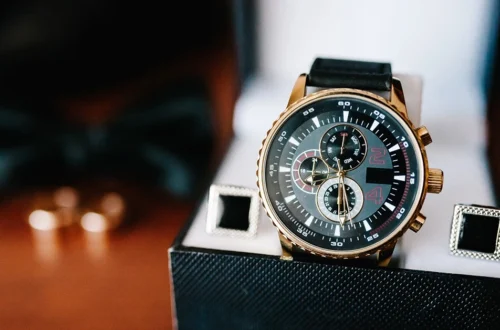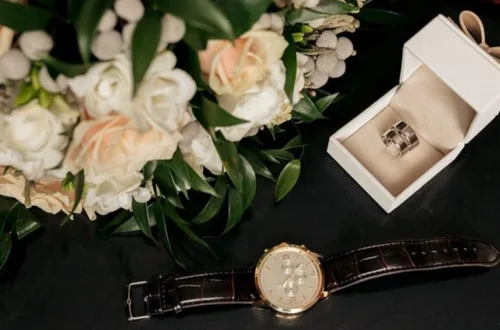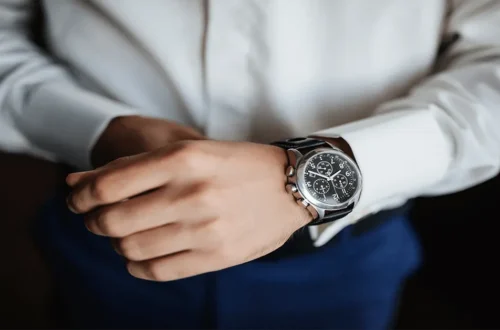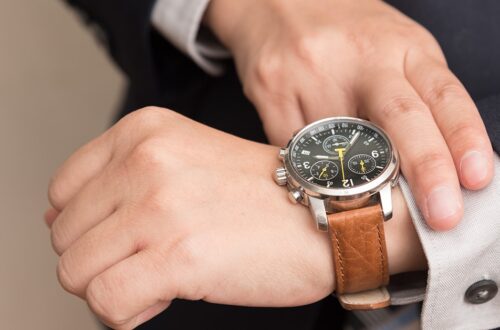If you have a watch or a collection of timepieces then you might have wondered what makes a watch tick and keep time with precision. The heart of the watch is called a movement which powers every function in the watch. The next wonderful thing to imagine is how and what are these movements made up of?
In fact these movements are made of highly engineered delicate components that all together come up to become a highly efficient watch movement that is a marvel in itself. These movements are the result of talented artisans who have unparalleled skills for the work.
As the external watch design is crucial, the type of movements used at the heart of the watch is as important as well. If coming to basics there are two types of watch movements, quartz and mechanical movements. The mechanical movements have further two types, one is self-winding (automatic) and the other is hand-wound mechanical movement.
After understanding how to look at the watch externally and internally we will move to the next crucial step, that is knowing about which movement is worth spending your money. When you come to purchase a watch do see what made movement is at the heart of the watch.
There are two most valued and commonly used movements a Swiss and Japanese movement. If you are buying any luxury Swiss timepiece then you might generally see a Ronda or and ETA movement in the watch. On the contrary you will find Japanese quartz movements in almost every other brand starting from entry level to many fashion and luxury watches.
Swiss movements are famous for their mechanical artistry whereas Swiss Quartz movements are a rear sight. Considering Japanese movements you can experience state of the art automatic Japanese movements in luxury Japanese watch brands and also have Japanese quartz movements easily available. The Swiss automatic movements hold its class as those are developed by time with more than a century of development and innovative evolution.
Looking at the construction materials of the watch, the most commonly used material is stainless steel that has high endurance and suitable for daily wearing. Companies tend to use various grades of stainless steel but the one with 316L grade stainless steel are much more durable and withstand the time test. Any cheaper grade of stainless steel will corrode in no time and ruin all the pleasure.
There are even more details that can be considered while purchasing a watch as what kind of crystal (glass over the dial) is used, depending on the price of the watch. Most commonly used crystal is a Mineral crystal, then comes the synthetic sapphire crystal and the high-end is natural sapphire crystal which is scratch resistant.
Few luxury brands also offer a see through case-back with a crystal installed in it. Those features are usually found in timepieces with automatic movements to flaunt its artistic mechanism.
Let us further guide you in detail about the types of movements which help you master the understanding of buying watches.
What is a Quartz Movement?
The first ever quartz powered watch was introduced in the 1960s and it has been popular since then. The quartz movement is powered by a battery that sends a precise amount of current through the quartz crystal which causes it to vibrate. The pulse generated then powers the movement. The second hand ticks once per second which keeps time with quite accurately. The most common trick to recognise a quartz movement is to watch the seconds-hand in the clock; if it jumps every second then it is a quartz movement.
The modern quartz movements have a good two to five years of battery life due to efficient power usage. These movements are durable and require low maintenance. The timekeeping efficiency of quartz movement has reached to only one second error over a year.
What is a Mechanical Movement?
The Mechanical movement is on a next level of creativity and has been around for over a century. Atypically to its quartz counterpart the mechanical movement is powered by a spiral spring that when winded, releases the kinetic energy at a controlled rate to power the movement. The mechanical movement is also known as a Calibre. The complex mechanism is designed to harness power from the tightly wound spring.
Most of the mechanical watches are hand assembled by the artisans with skilful methods. All these factors make a mechanical watch time taking to produce and limited in production numbers. As earlier described the mechanical movement has two variants one which is automatic and the other is hand-wound mechanical movement.
What is a Self Winding-Automatic Movement?
Both types of mechanical watch need energy to maintain timekeeping and other functions. In this case the self-winding-automatic movement derives its power from a spiral spring that is attached to a rotor that winds the spring when the watch is moved by natural wrist movement. The plus side to an automatic movement is if it’s worn daily then you might never need to reset the time.
What is a Power Reserve?
The important thing to understand about the automatic watches is that you need to wear these watches on regular bases. The automatic movement is designed to store power reserve in its spiral spring and even if the watch is not worn it will maintain its time for a while due to power reserve efficiency but once the power reserve ends it will stop ticking. Don’t worry it hasn’t stopped for good, you just have to wind it and re-adjust the time and you are good to go.
What is a Hand-Wound Mechanical Movement?
The hand-wound mechanical movements are a rear sight due to its need of physical work by the wearer. But there is a special kind of watch enthusiasts which love to engage with their timepieces. The manual winding action demands a separate kind of attention towards the watch because one has to manually wind the spring after a specific interval.
Solar Powered Movements
This is the newest type of movement that came later in the last century. The basic principal is based on a quartz movement but the battery is charged by a solar panel layered under the translucent dial. The solar power charges a rechargeable battery in the movement and in return powers the watch. Citizen has moved a step ahead with its ECO-Drive watches that harness power from natural and artificial light and has an astonishing power reserve from six months to 1.5 year depending on the model of the movement. With this aspect solar-powered movement virtually doesn’t need a battery change throughout its lifetime. The further magic in some solar-powered movements is that they are attached to an atomic clock over radio signals which eliminates the need of manually adjusting time.
How to Buy a Watch like an Ace
Related Articles
Looking for the perfect luxury watch? You’re in the right place! This blog will help you choose the best luxury…
Read MoreWhen choosing a wedding gift, it’s important to pick something meaningful, useful, and long-lasting. Weddings are special events that happen…
Read MoreWatch companies like Rado, Omega, and Tag Heuer frequently take centre stage when the topic of Swiss timepieces is discussed.…
Read MoreLuxury watches are more than timepieces—they are symbols of sophistication, heritage, and impeccable craftsmanship. For those seeking an elegant, high-quality…
Read MoreEver Wondered Why Citizen Watches Seem to Last Forever? Watch reliability depends equally on design quality and the durability of…
Read MoreEver wondered why some watches seem to lose value while others remain timeless investments? Citizen Watches distinguish themselves among dependable…
Read MoreEver stood in front of your wardrobe wondering, “Is this the right watch for my business meeting?” It’s a valid…
Read MorePurchasing an antique watch is an exciting endeavor. Whether you’re a novice or an experienced collector, timing your purchase will…
Read MoreEver wonder what your watch says about you in the workplace? In the modern business environment, a watch is not…
Read More
















